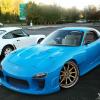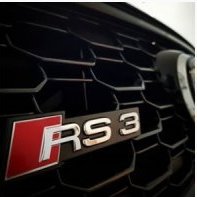Turbonetics Tn Series
Announcements
-
Similar Content
-
Latest Posts
-
How do you go about diagnosing ecu's that don't have data logging, is it more experience at that point and just trying out things that you think will fix the issue?
-
Stock O2 are basically useless beyond anything at stoich. Any misfire will also be seen as lean. The stock O2 also read a collective exhaust gas volume, not each cylinder. Sputtering and missing means not each cycle is firing, and some are. Which means even if rich, as shit, on cylinders as they miss, they'll read lean, but the cylinders that did fire will read rich, and combined, well, they can read anything from rich to lean. Start with the basics before even going looking at sensor values. Edit: I say the above, and that's coming from the guy with a few thousand dollars worth of scan tools sitting right beside me right now that I use frequently for my job.
-
I just finished up a manual swap and I have a 1999 S2 AWD automatic in my garage, depending on where you are located. I'm in the the midwest of the US.
-
I’ve heard it can be done, you need to redrill the holes where they bolt to the chassis and apart from that they are the same. I’ve never done it or know anyone personally that has, it’s just something I’ve heard
-
By joshuaho96 · Posted
If it's reading full rich prior to a misfire that gives one directional hint, if it's already reading lean, etc. If it's reading pretty cleanly stoichiometric then suddenly drops out from a misfire that suggests it's not air mass estimation that's the problem. Could be ignition, could be something more subtle. Could be the CAS has decided to start dropping out at random or the drive pin is worn leading to excessive lash and trigger errors. LTFT can tell you the same but it's slower to react and if this is a recent issue it might not have stabilized. STFT stuck in one direction vs fluctuating back and forth can be used instead but I like to read O2 voltages anyways and interpret directly. If the O2 voltages make no sense in general or are super slow to react it could also be a failing O2 sensor. There's no real error correction for failing O2 sensors in these cars.
-








Recommended Posts